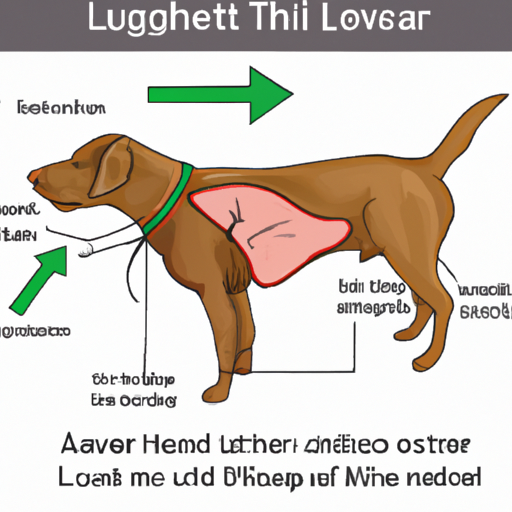Understanding Liver Shunt
A liver shunt, technically known as a portosystemic shunt, is a common yet serious health issue in dogs. In this condition, the blood bypasses the liver and doesn’t get properly detoxified. This anomaly might be something your dog was born with (congenital) or something that develops later in life (acquired). It’s crucial to remember that your dog relies on you, their caregiver, to monitor their health and take appropriate action when necessary.
Symptoms of Liver Shunt
You, as a loving caregiver, should know the indicators that might suggest your dog has a liver shunt. Here are some signs to watch out for:
- Poor growth in puppies
- Seizures
- Decreased activity level
- Excessive drooling
- Diarrhea
These symptoms can vary based on how severe the condition is and how much of the dog’s blood is bypassing the liver. Therefore, it’s always best to consult with a vet if you notice any abnormalities in your dog’s behavior or health.
Diagnosis and Treatment of Liver Shunt
Diagnosis of liver shunts typically involves blood tests, ultrasounds, and potentially more advanced imaging techniques like a CT scan. The table below lists common diagnostic procedures and their purposes.
| Diagnostic Test | Purpose |
|---|---|
| Blood Test | To check for abnormalities in the blood |
| Ultrasounds | To visualize the shunt |
| CT Scan | For detailed imaging of the liver |
Treatment usually involves managing the symptoms with a special diet and medications. In more severe cases, surgery may be necessary to correct the condition.
Prognosis and Management
With early detection and proper treatment, dogs with a liver shunt can lead a relatively normal and healthy life. As a caregiver, you play a crucial role in managing your dog’s condition. This includes:
- Regular vet check-ups
- Strict adherence to prescribed diets and medications
- Monitoring your dog’s behaviors and symptoms
Preventing Liver Shunt
While it’s not possible to prevent congenital liver shunts, you can take steps to reduce the likelihood of acquired shunts. This can be achieved through:
- A healthy diet
- Regular exercise
- Regular vet check-ups
FAQs
-
Can liver shunt in dogs be cured?
While liver shunt can’t be cured, it can be managed with a special diet, medications and, in some cases, surgery. -
Are certain dog breeds more susceptible to liver shunts?
Yes, certain small breeds like Yorkshire Terriers and Maltese are more prone to congenital liver shunts. -
Can a dog live a normal life with a liver shunt?
With early detection, appropriate treatment, and proper management, a dog with a liver shunt can lead a relatively normal and healthy life. -
What should I feed my dog if it has a liver shunt?
Your vet will recommend a special low-protein diet to help manage the condition. -
How is a liver shunt diagnosed?
Diagnosis typically involves blood tests, ultrasounds, and potentially more advanced imaging techniques like a CT scan.



